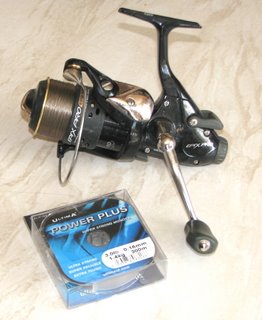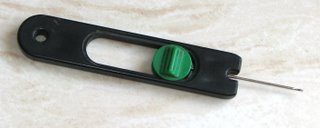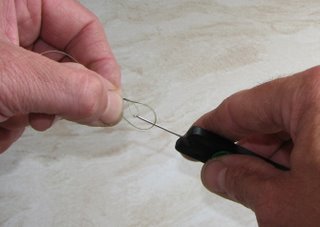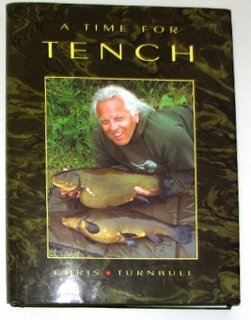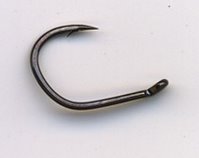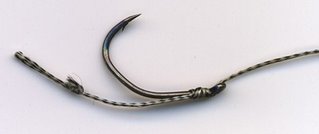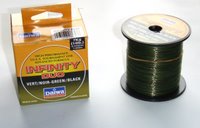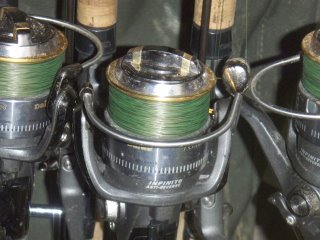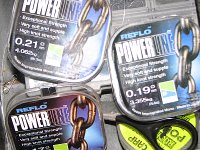I mentioned in
an earlier post that I'd read
Casting at the Sun recently. I also got a copy of
My Fishing Days and Fishing Ways by J.W. Martin (The Trent Otter) at the same time. Two reprints from the
Medlar Classics series - affordable hardbacks produced in an appealing format. I'm not a book snob and think books are meant to be read not objects to be admired, so the cheap price appeals to me. Paperbacks would have been even more appealing.
It must be me getting old, as I usually prefer books that are instructional rather than intended to invoke the spirit of angling, but the Yates book is a very good read. An evocative tale of his journey through carp fishing to catching the record. But for me it is spoiled by the section relating to the Golden Scale Club.
Nostalgia is fine, but trying to live in a romanticised Enid Blyton world in the modern age makes me spit. If Yates wants to fish with old tackle to catch carp, great. But please leave the silly names and ginger ale out of it. If I get the urge to read the book again I shall be taking a sharp knife to physically excise the offending pages!
The Martin book, on the other hand, is a genuine piece of history, having been written in 1906. For me the sections about the Trent and barbel are the most interesting. The famous Cromwell weir was still at the planning stage, so the river must have been tidal further upstream and somewhat different to what it is today, yet many of the stretches mentioned will be familiar to Trent regulars and are still productive today. I've caught from some of them myself. While tackle and baits have changed in some respects it's interesting to read how little some other things have altered. The fish are still the same, so they still hold in the same sorts of places they did 100 years ago and behave in similar fashion.
Another thing that hasn't changed is anglers moaning that the fishing isn't as good as it was years ago. In Martin's case I can't help thinking that taking most of the catch home, or selling it to pay for the next day's bait, can't have helped. So it's no wonder that a double figure pike was a rare capture, and a twenty pounder an absolute monster, but fourteen pound barbel were still to be had from the Mighty Trent. A good read. I must seek out a (cheap) copy of his barbel book.
You may have noticed a new quote from John Gierach in the sidebar. Not a writer I was familiar with, what with him being an American cane fly rod wafter, but I have seen a number of quotes from his writing on a few sites - notably
Pure Piscator. I thought I ought to acquaint myself with his work as he clearly had things to say that were worth saying.
I ordered
Death, Taxes, and Leaky Waders, a compendium of essays culled from six of his books. My third angling book purchase in as many weeks that contains no photographs of fish or diagrams of rigs! Gierach's a writer more on the 'why' of angling than the 'how' (although there's some of that slipped in almost incidentally), on anglers and their motivations. It turns out he studied philosophy, and had ambitions to become a 'serious' writer, which no doubt accounts for this. A parallel with Yates, perhaps, who went to art school - which attracts people who don't like the concept of work in the nine-to-five sense of the word, people who look at the world through enquiring eyes.
I have long felt that fishing is akin to the creation of art, be that in paint or prose. Writing, painting, and fishing are all about immersion in the task at hand, about solving problems, finding new ways to do things, avoiding repetition, keeping out of ruts. They are all three intellectual pursuits. The results (the book, the painting, the fish in the net) are not what they are about. They are about the process. While that process can be frustrating, to the point of heartbreak or despair, it is what provides the satisfaction. Gierach knows this. Joseph Conrad knew it too; "They can only see the mere show, and never can tell what it really means". That's stuck with me for nigh on thirty years - which is why the full quote appears at the foot of this page.
Books of essays can be dipped into. Having a mistrust of all things fly-fishing I turned straight to the essay
Pike - hoping I might ease myself into the book through a species I have some understanding of and almost immediately found a quotable line; "Skill in fishing is a nebulous thing based largely on seasoned intuition, perhaps informed by a little knowledge, but catching a few fish now and then doesn't mean you have it". The book is by my bedside. I can see it being defaced by my corner foldings and underlinings...
Labels: books, musings, reviews








